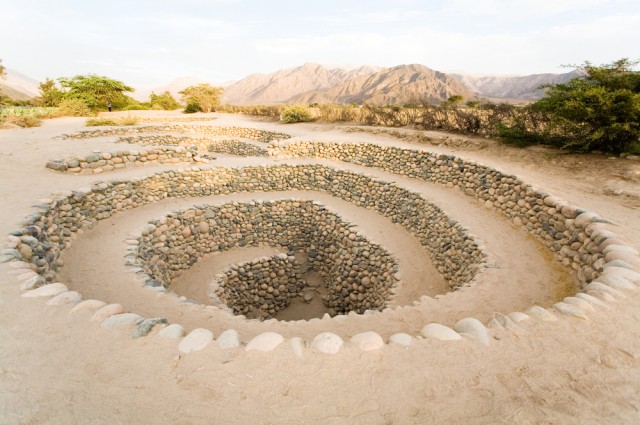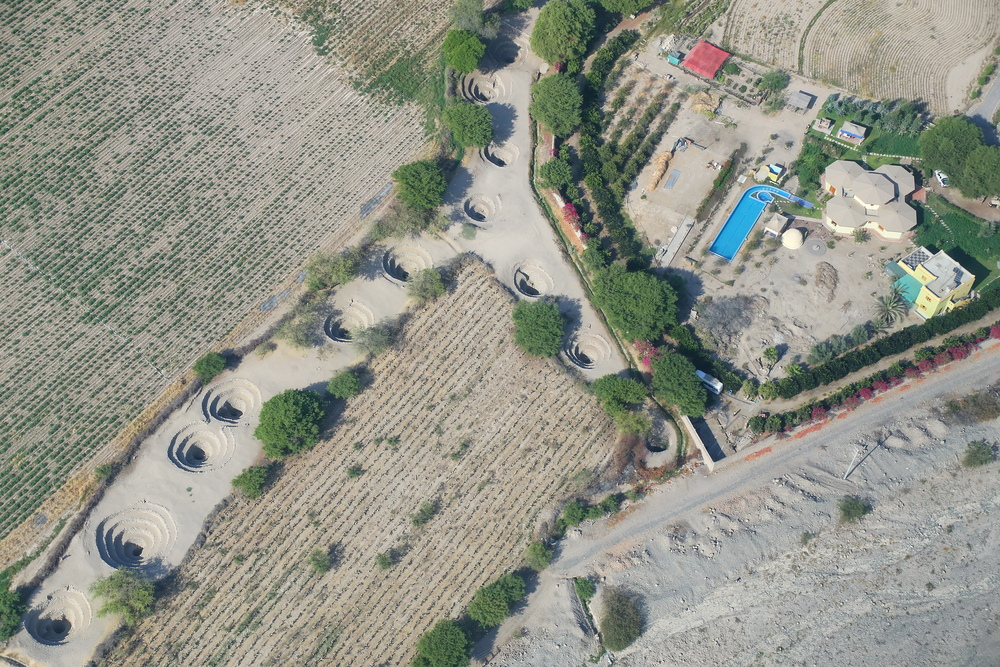An Ancient Mystery In The Peruvian Desert Has Finally Been Solved From Space
May 4, 2016
One of the mysteries of the Nazca civilization, which existed from 500 to 200 B.C., has finally been solved, thanks to satellite observations. The Nazca are famous for their impressive lines carved into the Peruvian desert, but they also built an incredible system of aqueducts, some of which still function today. The system is covered in spiral openings, called puquios, but their function remained unclear – until now.

Credit: Pikselstock / Shutterstock
Rosa Lasaponara and a team from the Institute of Methodologies for Environmental Analysis in Italy have discovered that the puquios' corkscrew-shaped tunnels funnel wind into a system of underground canals that push the water where it needs to go.
The team used satellite images to pinpoint the position of all the puquios across the Nazca region and then compared them to how water sources and settlements were distributed. Their research will be published in the journal Ancient Nasca World: New Insights from Science and Archaeology later this year.
"The puquios were the most ambitious hydraulic project in the Nazca area and made water available for the whole year, not only for agriculture and irrigation but also for domestic needs," Lasaponara told the BBC.
She added: "Exploiting an inexhaustible water supply throughout the year, the puquio system contributed to an intensive agriculture of the valleys in one of the most arid places in the world."

Credit: Don Mammoser / Shutterstock
The scale and sophistication of the puquios aqueducts indicate that their construction and upkeep must have required a collaborative and socially organized system. The builders must have had a deep knowledge of the geology of the area as well as an understanding of how to make the most of the annual variation in water availability.
It is not surprising that a civilization that was able to build such a feat of engineering was then able to design the complex Nazca lines, which include figures of animals, plants, humans, and many geometric lines. They are believed to have a religious connotation, related to the worship of mountains and water sources.
Whatever their significance and function, the builders knew what they were doing. Understanding the function of puquios might even get us closer to understanding for certain what the lines were actually for.
via IFLScience
Click Here For The Most Popular On Sunny Skyz
 A Husky Was Lost. Owners Found Him With A Drone - Hanging Out With Bears
A Husky Was Lost. Owners Found Him With A Drone - Hanging Out With Bears
 Dog Completely Changes From Black To White
Dog Completely Changes From Black To White
 Friendly Donkey Serves As A Guide For A Blind Horse
Friendly Donkey Serves As A Guide For A Blind Horse
 Cat's Face Shows Opposite Of Gratitude After Being Rescued
Cat's Face Shows Opposite Of Gratitude After Being Rescued
 A First Birthday Reunion Party For The Whole Litter, Mama Pup Included
A First Birthday Reunion Party For The Whole Litter, Mama Pup Included
 This Senior Dog Sanctuary Celebrated 12 Years With A Dog Prom
This Senior Dog Sanctuary Celebrated 12 Years With A Dog Prom
 Man And Dog Left Stunned After Cat FLIES Across The Room
Man And Dog Left Stunned After Cat FLIES Across The Room
 The Cat Chooses You: A Boy's Heartwarming Shelter Adoption Story
The Cat Chooses You: A Boy's Heartwarming Shelter Adoption Story
 Little Girl Teaches Cat How To Use Treadmill
Little Girl Teaches Cat How To Use Treadmill
 Mom Shares The Hilarious Reasons Her 4-Year-Old Daughter Gets Mad At Her
Mom Shares The Hilarious Reasons Her 4-Year-Old Daughter Gets Mad At Her
 Squirrel Risks His Life To Save Mate From A Snake
Squirrel Risks His Life To Save Mate From A Snake
